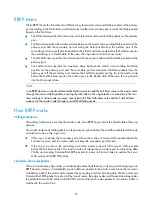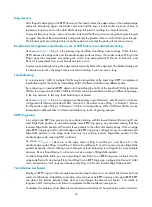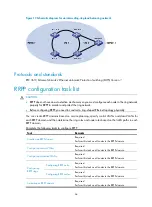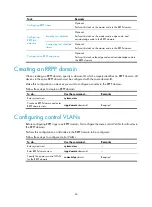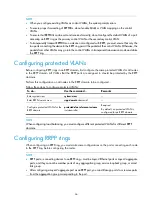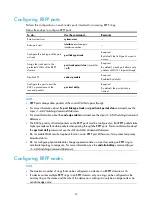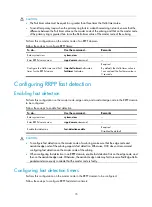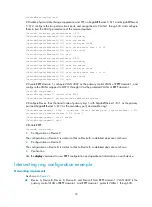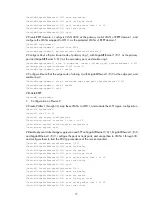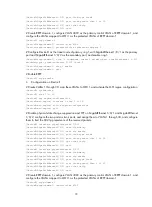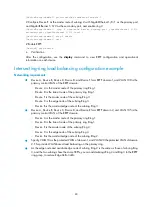
70
CAUTION:
•
The Fail timer value must be equal to or greater than three times the Hello timer value.
•
To avoid temporary loops when the primary ring fails in a dual-homed-ring network, ensure that the
difference between the Fail timer value on the master node of the subring and that on the master node
of the primary ring is greater than twice the Hello timer value of the master node of the subring.
Perform this configuration on the master node of an RRPP domain.
Follow these steps to configure RRPP timers:
To do…
Use the command…
Remarks
Enter system view
system-view
—
Enter RRPP domain view
rrpp domain
domain-id
—
Configure the Hello timer and Fail
timer for the RRPP domain
timer hello-timer
hello-value
fail-timer
fail-value
Required
By default, the Hello timer value is
1 second and the Fail timer value is
3 seconds.
Configuring RRPP fast detection
Enabling fast detection
Perform this configuration on the master node, edge node, and assistant-edge node in the RRPP domain
to be configured.
Follow these steps to enable fast detection:
To do…
Use the command…
Remarks
Enter system view
system-view
—
Enter RRPP domain view
rrpp domain
domain-id
—
Enable fast detection
fast-detection enable
Required
Disabled by default
CAUTION:
•
To configure fast detection on the master node of a subring, make sure that the edge node and
assistant-edge node of the subring supports fast detection. Otherwise, H3C does not recommend
configuring fast detection on the master node of the subring.
•
When configuring fast detection in an RRPP domain, enable fast detection first on the edge node, and
then on the assistant-edge node. Otherwise, the assistant-edge node may fail to receive Fast-Edge-Hello
packets and erroneously conclude that the master node is faulty.
Configuring fast detection timers
Perform this configuration on the master node in the RRPP domain to be configured.
Follow these steps to configure RRPP fast detection timers:




